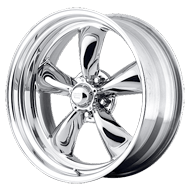Road force tire balance is a system whereby a load-roller is used to regulate the force of the road on the tire to achieve a combined uniformity of both wheel and tire package.
The Technician measures the force variation and the run-out of both the wheel and tire assembly to strike a balance thereby ensuring a balanced weight carriage position and capability on the tires.
Road force balancing, sometimes called ride matching, is the most effective way to diagnose and resolve worn out or force variation vibrations. In this article you will learn what is road force tire balancing.
Why is road force balance a better solution?
It is a better solution because it aids your discovery of some causes of tire vibrations in your steering wheels which may make your ride uncomfortable and invariably cause havoc to both your tires and wheel as well.
Once you get this sign, it is a call to get your car in a tire and auto repair shop for inspection and possible correction.

What causes wheel vibration in vehicles?
So many reasons can be adduced to wheel vibration. It may be imbalance of the wheel (which occurs when there is an over-weight on one side of the vehicle over and above the other) or road force variation (which usually occur when a wheel is not being perfectly round, has worn-out with uneven tread or uneven sidewall stiffness of the tire.
What Benefit Do I derive from Timely Road Force Balancing?
- It helps to promptly identify vehicle pull or drift problems (you may notice your vehicle veering if you momentarily take your hands of the wheel while driving in a straight line)
- It enhances a noticeable improvement in driving quality and handling if detected and corrected on time.
- It helps to solve wheel vibration due to tire and rim run-out and wheel-mounting error
What causes excessive Road Force?
Road Force or Wheel Force Variation is mostly due to wheel run-out or uneven tread or sidewall stiffness in the tire. Run-out is when a tire or rim is out of round when rolling; frequent causes are a bent rim or uneven tire wear.
Is Road Force Balancing and Wheel Alignment the Same?
Wheel alignment and force balancing are not the same but most often being confused to mean same. While wheel alignment involves adjusting the angles of the wheels so that they can be perfectly paralleled to each other and perpendicular to the ground.
Force balancing on the other hand is aimed at identifying where wheel weights should be applied to counter-balance heavy spots.
How much does it cost to force road balance tires?
The cost may vary depending on the extent to which the service is to be carried out. A good road force balance may require dismounting a tire and spinning it on the wheel which may cost more than ordinarily balancing the tires in isolation.
Tire balancing cost may range from $15 to $75 (say average of $45) depending on which location you visit and what warranty is offered.
How long does it take to road force balance tires?
A general wheel balancing can take between 40 minutes to 2 hours depending on several factors which may include tire conditions, your location’s weather conditions and your driving habits; while force road balancing may take a longer period because of the processes involved.
However, it is advised that you consult a qualified technician or force balancer for an expert service.
How do I know that my wheel needs balancing?
The moment you get the signs of your tires being out of balance, shaking or vibrating at a speed of between 60 and 70 kilometers per hour, you should visit a wheel balancing technician.
Generally, vibrations and shaking in the steering wheel and vehicle seats are the top indications that something is wrong with the wheels.
Wheel Balance and Wheel Vibration Control: What You Need to Know
Ordinarily, the ultra-sensitive road feel of today’s vehicles gives drivers a hands-on detection of vibration, a warning of potential problems. So, at 60 kilometers per hour, an average size tire rotates 85 times per minute.
At this speed, slight variations in balance, sidewall stiffness or roundness can cause the wheel to literally slam into the pavement 14 times a second.
Failure to check, excessive wheel vibration can result in expensive damages and unsafe driving conditions such as damages to suspension and steering components, unsafe steering, handling excessive tire-wear, and accidents.
Should I Balance My Tires Before an Alignment?
It doesn’t matter whether you get your alignment before or after having your new tires put on. Most experts agree that the only effect worn tires have on your alignment is a change to the vehicle’s ride height which, given today’s steering and suspension design, should be negligible.
But for safety purpose, it is advisable when you change your tires to balance them and get the alignments done. This will keep your mind at rest and enhances perfect ride on the road.
Conclusion
Since we need to regulate the force of the road on the tire to achieve uniformity of wheel and tire package, road force balancing or ride matching is considered an effective way out of trouble that can arise as a result of worn-out tires or vibrations.
Discovering some various causes of tire vibrations in your steering wheels gives you an early insight on what to do to enjoy smooth ride always.
It is through this process that we get to know that road force occurs due to wheel run-out or uneven tire-wear which may make your ride uncomfortable and invariably cause havoc to both your tires and wheel as well.
Therefore, it is instructive to force balance your tires most often in the overall interest of your personal safety and longevity of your vehicle.



